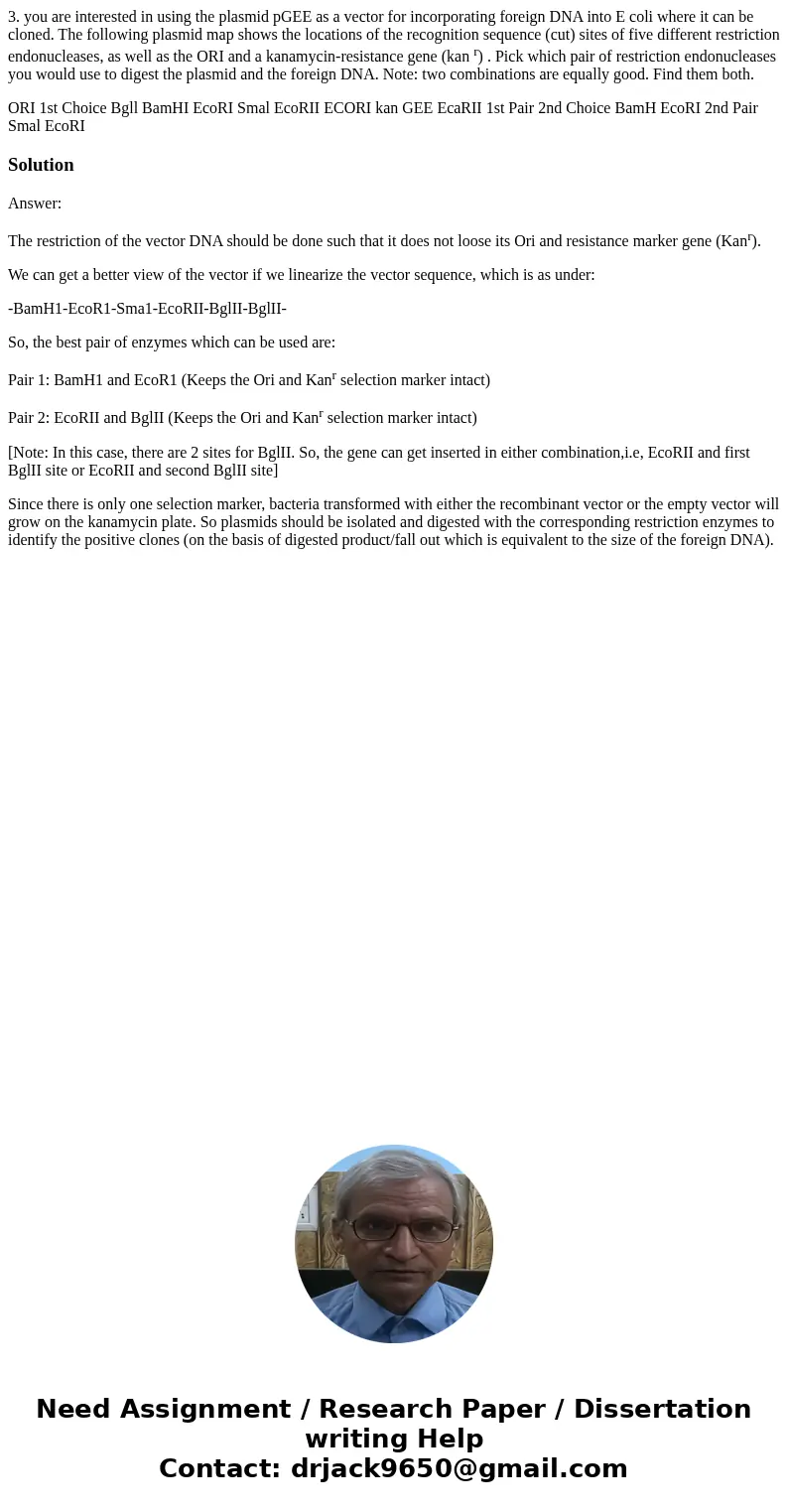3 you are interested in using the plasmid pGEE as a vector f
3. you are interested in using the plasmid pGEE as a vector for incorporating foreign DNA into E coli where it can be cloned. The following plasmid map shows the locations of the recognition sequence (cut) sites of five different restriction endonucleases, as well as the ORI and a kanamycin-resistance gene (kan r) . Pick which pair of restriction endonucleases you would use to digest the plasmid and the foreign DNA. Note: two combinations are equally good. Find them both.
ORI 1st Choice Bgll BamHI EcoRI Smal EcoRII ECORI kan GEE EcaRII 1st Pair 2nd Choice BamH EcoRI 2nd Pair Smal EcoRISolution
Answer:
The restriction of the vector DNA should be done such that it does not loose its Ori and resistance marker gene (Kanr).
We can get a better view of the vector if we linearize the vector sequence, which is as under:
-BamH1-EcoR1-Sma1-EcoRII-BglII-BglII-
So, the best pair of enzymes which can be used are:
Pair 1: BamH1 and EcoR1 (Keeps the Ori and Kanr selection marker intact)
Pair 2: EcoRII and BglII (Keeps the Ori and Kanr selection marker intact)
[Note: In this case, there are 2 sites for BglII. So, the gene can get inserted in either combination,i.e, EcoRII and first BglII site or EcoRII and second BglII site]
Since there is only one selection marker, bacteria transformed with either the recombinant vector or the empty vector will grow on the kanamycin plate. So plasmids should be isolated and digested with the corresponding restriction enzymes to identify the positive clones (on the basis of digested product/fall out which is equivalent to the size of the foreign DNA).

 Homework Sourse
Homework Sourse